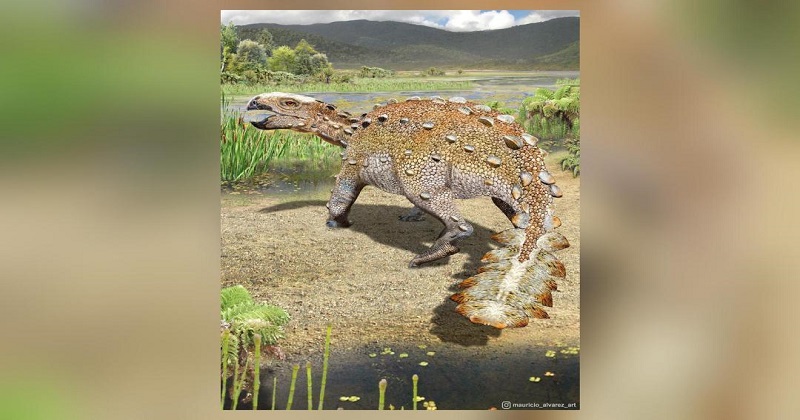
Chile has discovered a new dinosaur species with a flat, weaponized tail that resembles a battle axe.
According to a research published in the journal Nature on Wednesday that throws fresh insight on the genesis and development of armoured dinosaurs, scientists identified the new species, which had a tail with a battle axe-like structure unlike any other creature at the period. Stegouros elengassen were a two-metre-long dinosaur that looked like strongly armoured ankylosaurs with a club at the end of their tails.
As per the researchers, which included Alexander Vargas of the Universidad de Chile, the study looked at well-preserved and generally complete late Cretaceous fossils discovered in the Magallanes province of Patagonia, Chile’s southernmost area, between 71.7 million and 74.9 million years ago.
The discoveries shed new light on the origins and early development of armoured dinosaurs like stegosaurs with tail spikes and ankylosaurs with massive clubs at the end of their tails. The skull characteristics of the newly found species were comparable to those of previous ankylosaurs. The remainder of its skeleton, on the other hand, was mostly primitive, with certain characteristics similar to those of stegosaurs.
The study focused on the dinosaur’s massive tail weapon, which consisted of seven pairs of flattened, bony deposits welded together in a frond-like structure over the outer section of its tail. The combat axe-like construction distinguished it from other armoured dinosaurs’ paired spikes and clubs. The researchers discovered Stegouros to be a ‘transitional ankylosaur’ connected to the Kunbarrasaurus from Australia and Antarctopelta from Antarctica after reconstructing its family tree and comparing it to comparable dinosaurs.
Also Read: Fisherman finds sea creature that looks like ‘cheeseburger with teeth’
The scientists believe that branches of the ankylosaur family tree survived in Laurasia and Gondwana following the supercontinents’ ultimate split in the late Jurassic era, roughly 163 to 145 million years ago. The researchers stated that the earliest types of ankylosaurs may have existed in Gondwana, and researching them might reveal fresh information on the origins and development of armoured dinosaurs.

Post Your Comments